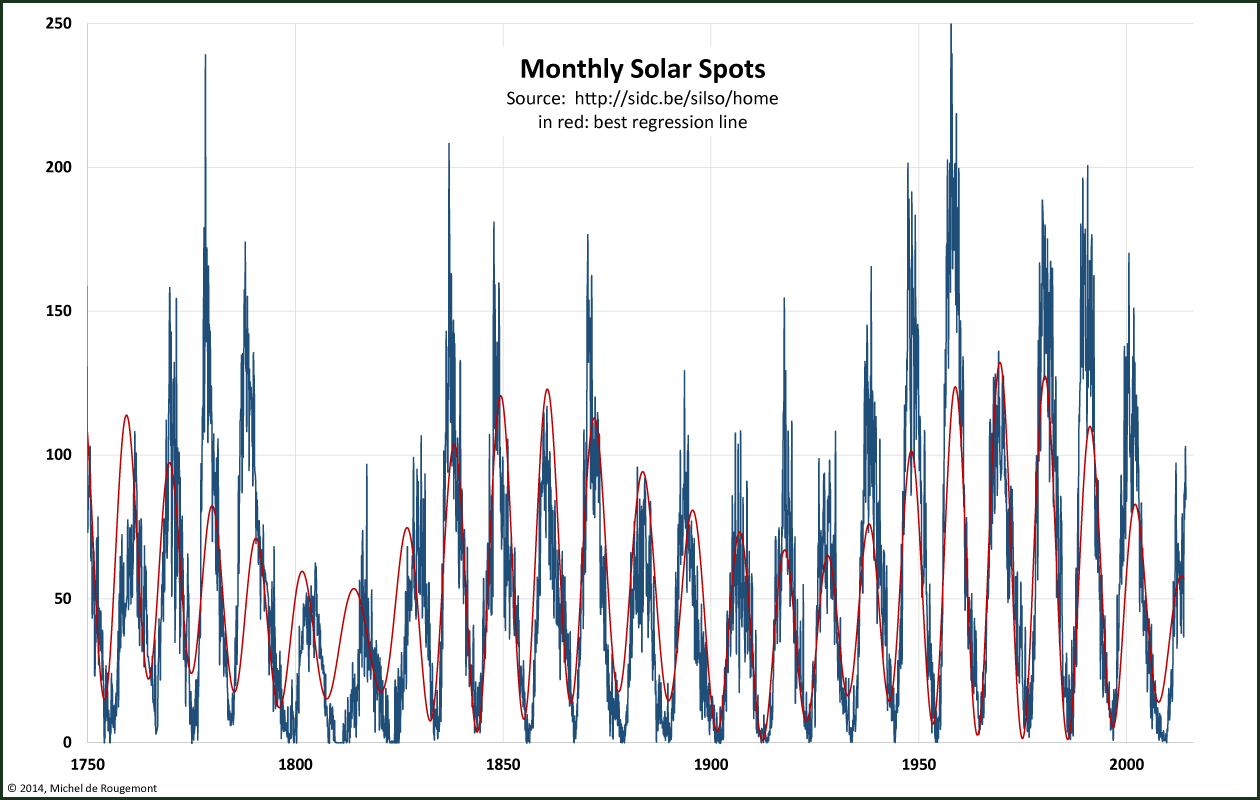Nobody will dispute that the sun is our planet’s heat source.
The so-called solar constant is the flux of radiative energy that reaches the top of the earth atmosphere. On average it is now estimated to be 1366 W/m2.
But to call it a “constant” is a misnomer. Neither the source nor the receiving body are in a steady state.
On average the sun is one astronomic unit (150 million km) away from the Earth. But since the Earth orbit is slightly elliptic, this distance oscillates between the perihelion in early January (152’097’701 km) and aphelion in early July (147’098’074 km). This ± 1.7% yearly orbital oscillation causes the solar constant to fluctuate by ± 3.4% from 1’413 W/m² in early January to 1’322 W/m² in early July; thus, warmer winters can be expected in the Northern hemisphere than in the South.
Also, the sun has no constant activity. Measurements made over time reveal a cyclic pattern with a period of approximately 11 years:

Solar irradiation from 1976 to 2013. Source : Physikalisch-Meteorologisches Observatorium Davos
A solar observation that could be made since a long time is the count of spots that are forming at the surface of the sun. It also shows a cyclic behaviour with a period of approx. 11 years, and, possibly, another one of 108 years. The variation of solar irradiation of ± 1 W/m2 or ± 1% shown on the previous graph seems to be related with the frequency of these spots.

Monthly average number of observed solar spots (blue) and regression analysis (red).
Source: WDC-SILSO, Royal Observatory of Belgium, Brussels.
Regression analysis (R2 = 0.62, which is poor) showing periods of 11 and 108 years.
Other variation of the solar irradiation can be searched in the so-called “orbit forcing” that takes place over long time periods due to change in the tilt of the Earth and of the shape of its orbit. So called Milankovitch cycles seem to fit well with climates changes that are described as having happened during the Quaternary period (past 2.5 million years), and in particular ice ages.
Cosmic irradiation
Cosmic rays are radiations of high energy particles that emanate from the sun and from outside the solar system. They are steadily hitting the planet and cannot be well distinguished from cyclic solar activity.
They interact with the planet’s magnetic field which deviates them. Also, they initiate a reaction of secondary neutrons with nitrogen contained in the atmosphere to produce the 14C isotope, maintaining an almost constant concentration of this unstable isotope in the atmosphere.
For obvious reasons their observation is spreading over few recent years only. Any hypothesis about their past variations and their contribution in the shaping of the climate, in particular cloud formation, are highly speculative.


